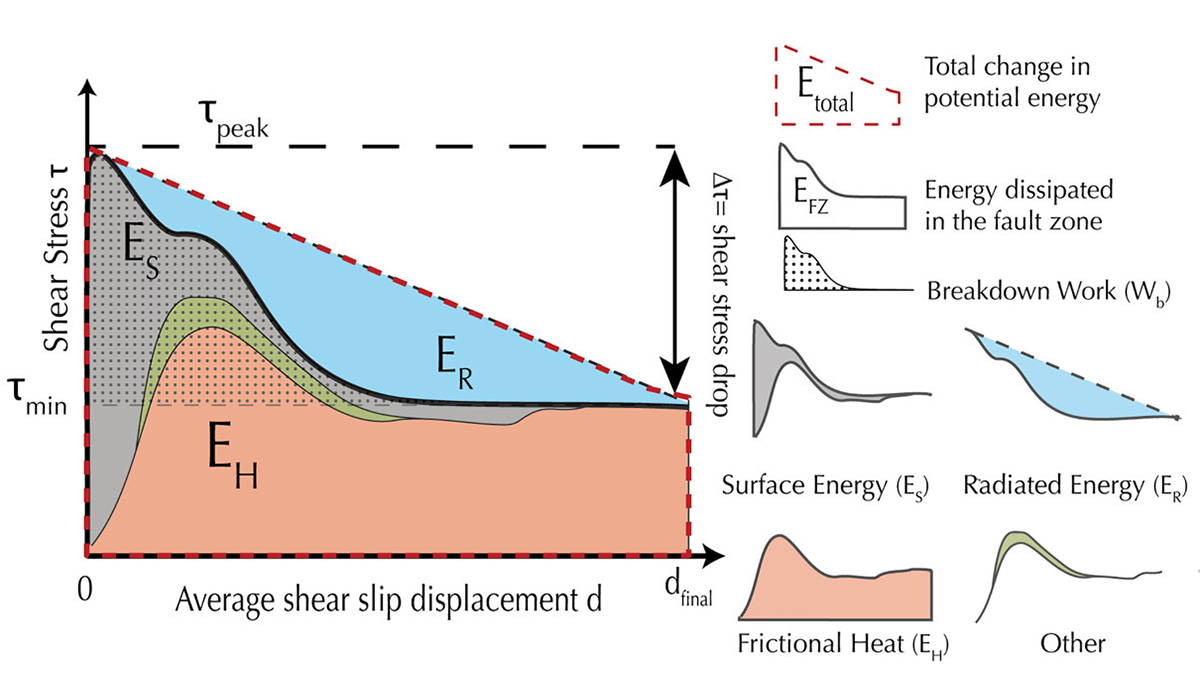Editors’ Highlights are summaries of recent papers by AGU’s journal editors.
Source: AGU Advances
Quantifying the major elements of an earthquake energy budget is challenging. Seismologists can quantify the radiant energy that causes ground shaking, but they cannot quantify the other two major components: thermal dissipation and the energy that goes into creating new surface energy.
Since less than about 20% of an earthquake’s energy goes into radiation, approximately 80% of the budget is in question and represents a major unknown in earthquake physics. This is a significant limitation considering that the energy budget and the conversion of energy into various forms are one of the most powerful tools for describing natural phenomena in a robust and quantitative manner. The only way to resolve such lack of knowledge is by field-based and/or laboratory studies.
Using laboratory experiments, or “lab-quakes”, Ortega-Arroyo et al. [2025] quantify, for the first time, all three major components of the earthquake energy budget. Their findings open new opportunities for earthquake hazard assessment.
Citation: Ortega-Arroyo, D., O’Ghaffari, H., Peč, M., Gong, Z., Fu, R. R., Ohl, M., et al. (2025). “Lab-quakes”: Quantifying the complete energy budget of high-pressure laboratory failure. AGU Advances, 6, e2025AV001683. https://doi.org/10.1029/2025AV001683
—Alberto Montanari, Editor-in-Chief, AGU Advances

